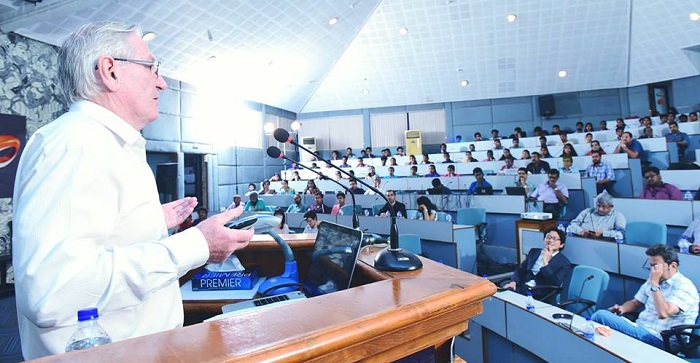A persistent question that has been troubling the animation industry since its inception is: how to get the money? Whether it is money for production, marketing or salary, it has been an arduous task to get it. Shedding light on this universal plight at Animation Masters Summit 2017, One Animation studio head John McKenna spoke on ‘Why Care About Money? The Film-maker’s Journey’.
Voicing every artist from the animation industry, McKenna said, “We came into the industry with passion, not with the intention to make money.” He explained that as animation artists, we study the craft, tell stories, connect with the audience and influence people throughout the world. Initially, money seems interesting, but eventually gets boring. But it still is important. “When you come to animation, you want to write, so you need to take money from others,” he stressed.
“I started my career in animation hoping to make great films; now I spend most of the time thinking from where to get the money from,” exclaimed McKenna, who has been in the animation industry for almost 25 years now.

These days, it is possible to find funding. IMDA (Infocomm Media Development Authority) could be a source of grants and subsidies. One can understand their mandate and then approach them. Major broadcasters and digital platforms like Amazon, Netflix and Google are always on the lookout for great content. Bank loans and investors can also be a source of funding.
But how do you get this invested money back? McKenna explained various ways to get your content to the audience and in the process get returns on the investment. Money can be earned through broadcasters, digital strategy and releasing the theatrical in domestic as well as international markets. Creating spin-offs has also been a successful practice. One move that almost every studio resorts to now is licensing and merchandising of the IP; producing apparel, toys, gadgets, accessories and launching mobile apps and games.
He is of the opinion that apart from the story, one also has to look at the quality, marketplace, audience preference, competition and cost to get a green-light on the budget. And a major component is whether the film can make a record at the box-office. “The future of your project is the audience. You have to think of them while working on it.”
Quoting William Goldman, McKenna said, “Nobody knows anything. Not one person in the entire motion picture field knows for a certainty what’s going to work. Every time out it’s a guess and, if you’re lucky, an educated one.” Every movie is a new experiment. As they are making it, the creators don’t know if it will work on not. No one in the industry can predict if the film will be a hit or a flop, and each creation has its own challenges. In these circumstances, he only has to say that “Don’t stop dreaming. Don’t try to make something commercial. Be aware of the money and you will get more made.”
Everyone talks about art, talent and creativity but McKenna addressed the most burning issue. In the end, he had only one advice: Think about the money, don’t chase it.

